
The Next Trillion Dollar Wave - AI Narrative in Crypto: Who Are the Top Players?
Dec 12, 2024 21:40
Written by TechFlow
How to Describe Solana?
From rising from the ashes of FTX, to being a hub for meme coins, and being known for its affordability and efficiency... These labels, focused on assets, only scratch the surface of Solana's ambitions.
Solana is not just a blockchain; it’s also venturing into the mobile space and now, into social media.
Yesterday, Solana officially announced a new product, or technology stack, called Solana Blink. This innovative tool converts any on-chain operation into a shareable link, allowing it to be seamlessly embedded into social media platforms and websites.
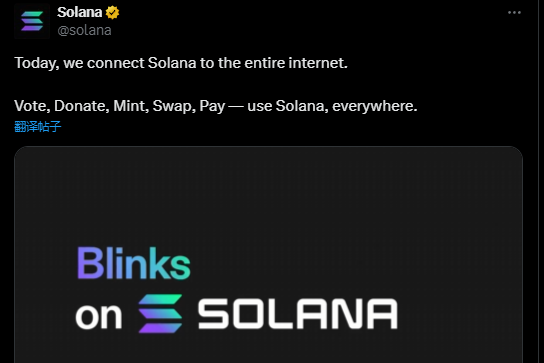
The name Blink stands for Blockchain Links, referring to the shareable links mentioned above. The abbreviation Blink, which also means "to blink," cleverly implies:
On-chain operations, available in the blink of an eye.
Embedding on-chain activities into social media with just one link feels reminiscent of Farcaster, doesn’t it?
It is similar, but not quite the same.
Based on available information, the main difference between Solana's Blink and Farcaster's Warpcast application is its universal compatibility.
What does universal compatibility mean?
Simply put, Solana won’t create its own dApp but will provide a universal ability to convert on-chain activities into shareable links. These links can be embedded in any platform, such as Twitter, Instagram, or any other website or app, without preference.
The official video clearly demonstrates how easy it is to use Blink:
Someone posts on Twitter, calling for donations and includes a Blink link in their post.
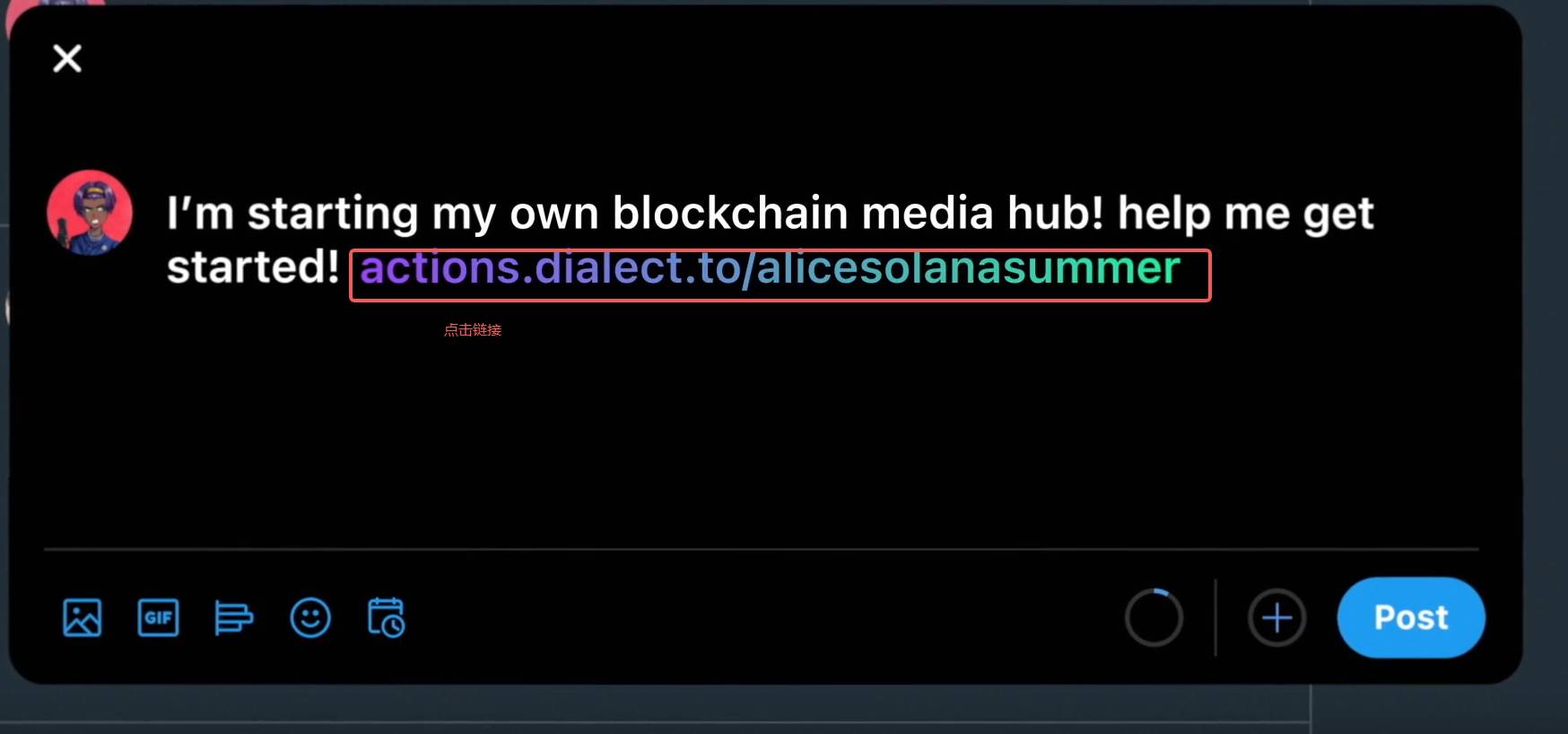
When others see the post, the link transforms into a straightforward donation page. You can click the button to donate directly.
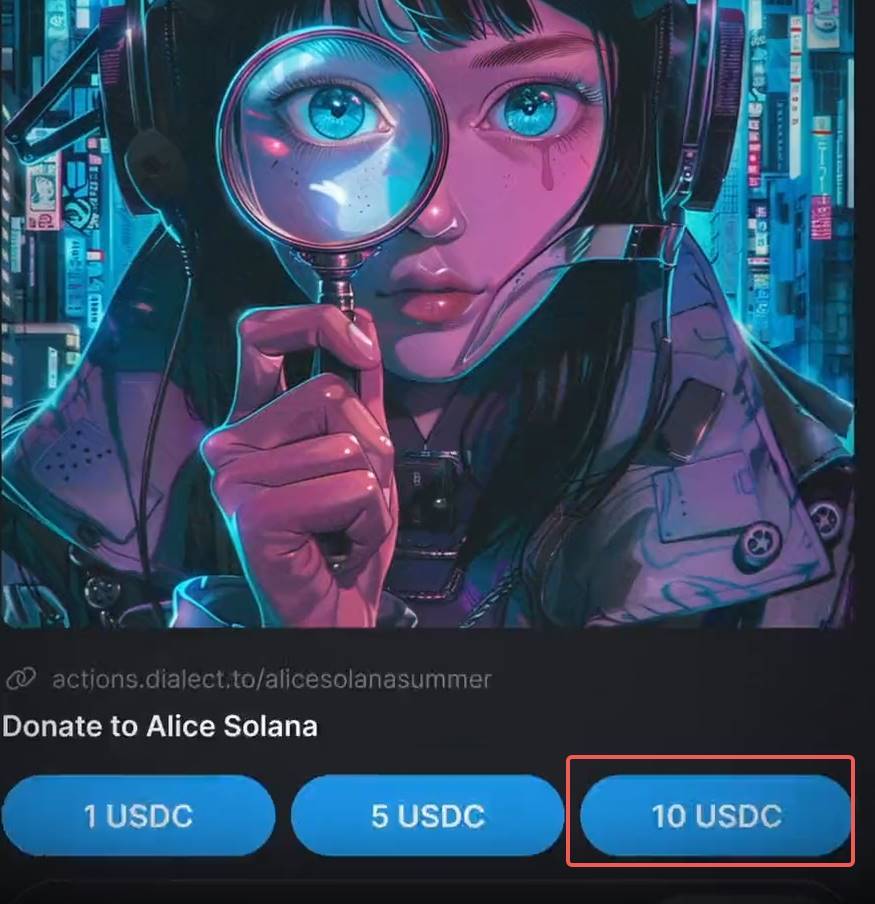
Without needing to switch to any DAO, DEX, or other dApps, everything happens right within the Twitter interface (assuming you have a compatible wallet).
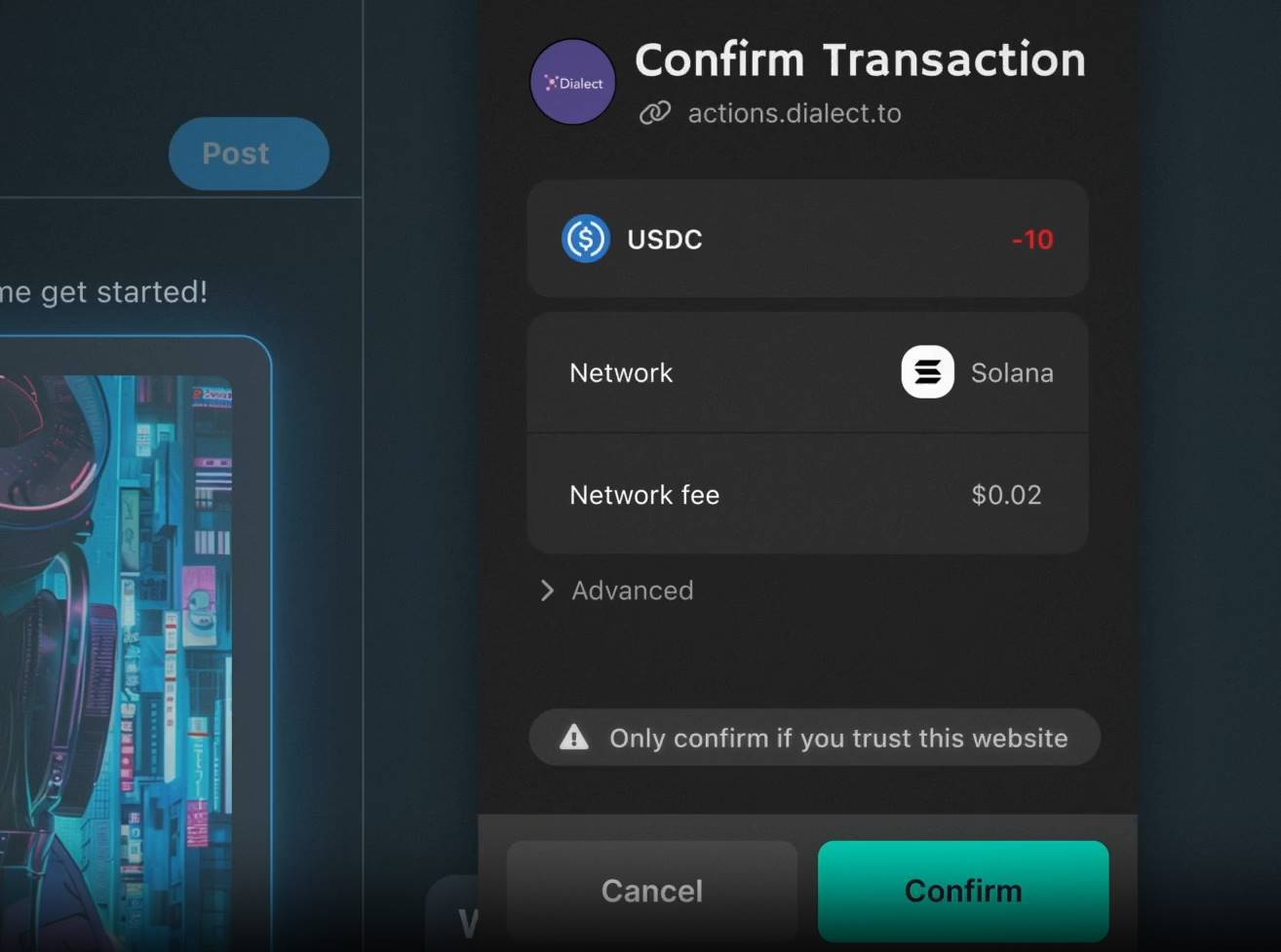
Once the donation is made, the on-chain transaction is executed without requiring users to understand the underlying blockchain details.
This example shows how Blink turns any on-chain activity into a visible, clickable link. Users can complete blockchain operations, such as donations, NFT creation, or swaps, directly from the front end without navigating away.
The complexity of the underlying logic is hidden, presenting users with a simple, intuitive interface.
Solana calls the technology stack that supports Blink "Actions." Actions is an API that allows developers to build transaction messages using complex on-chain business logic. These messages can be viewed, signed, and sent by clients. Social media-native buttons, QR codes, or URLs can all trigger actions.
Therefore, Blink is essentially a type of URL. This means there are potentially many ways to execute various on-chain operations using Solana's technology, not limited to just this method. The possibilities for future applications are vast.
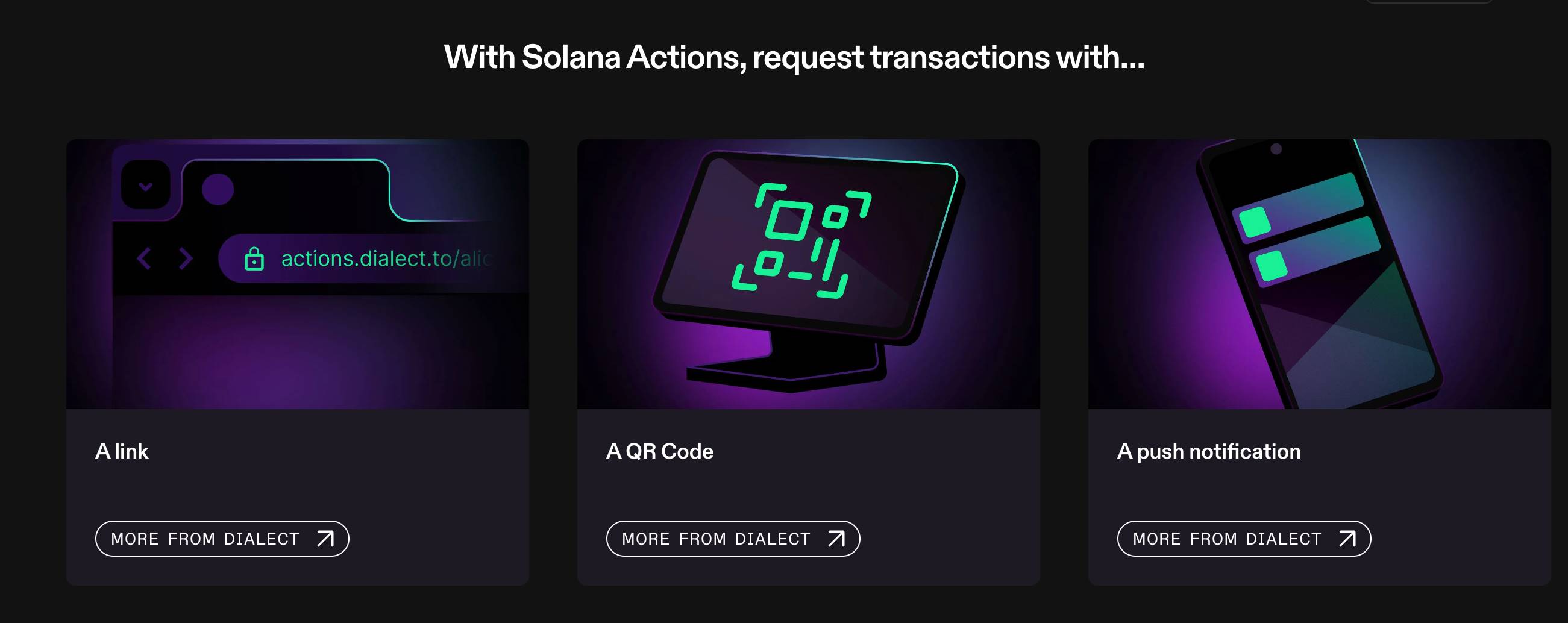
Of course, Solana alone might not be able to accomplish this.
The technology behind Actions and Blink is a collaboration between Solana and Dialect (@saydialect). The specific functionalities like voting, buying NFTs, or swapping tokens may require Solana’s ecosystem projects to provide the necessary services.
For example, you might use Sphere for donations, Tensor for buying NFTs, and Jupiter for swapping tokens. Essentially, while the capabilities are provided by ecosystem projects, the presentation and interaction happen directly on social media.
You don’t need to worry about who provides the technology behind the scenes; everything is seamlessly packaged.
Returning to the initial question, is this similar to Warpcast?
In essence, they both achieve the same goal: embedding on-chain operations directly into social media, simplifying the user experience.
However, if you look at the recent trends in the crypto space, everyone seems to be aiming for mainstream adoption, making socialization a focal point of FOMO (Fear of Missing Out). I
nterestingly, they are all converging on socialization through different approaches.
Farcaster takes a standalone approach by creating Warpcast, a decentralized social media platform that uses the FRAME framework to embed various on-chain operations, allowing users to interact seamlessly without leaving the platform.
TON leverages its existing connection with Telegram, a mature social media giant, integrating mini-programs and the TON wallet to enhance user experience with in-app interactions and games.
Solana opts for a symbiotic approach, not creating its own social media platform but integrating seamlessly with existing popular platforms through Blink. This way, Solana taps into the vast user base of established social media without worrying about generating its own traffic.
Twitter, being a mainstream platform, is a strategic starting point for Solana. Crypto Twitter already has its dedicated audience, making it a competitive edge for Solana to focus its efforts here.
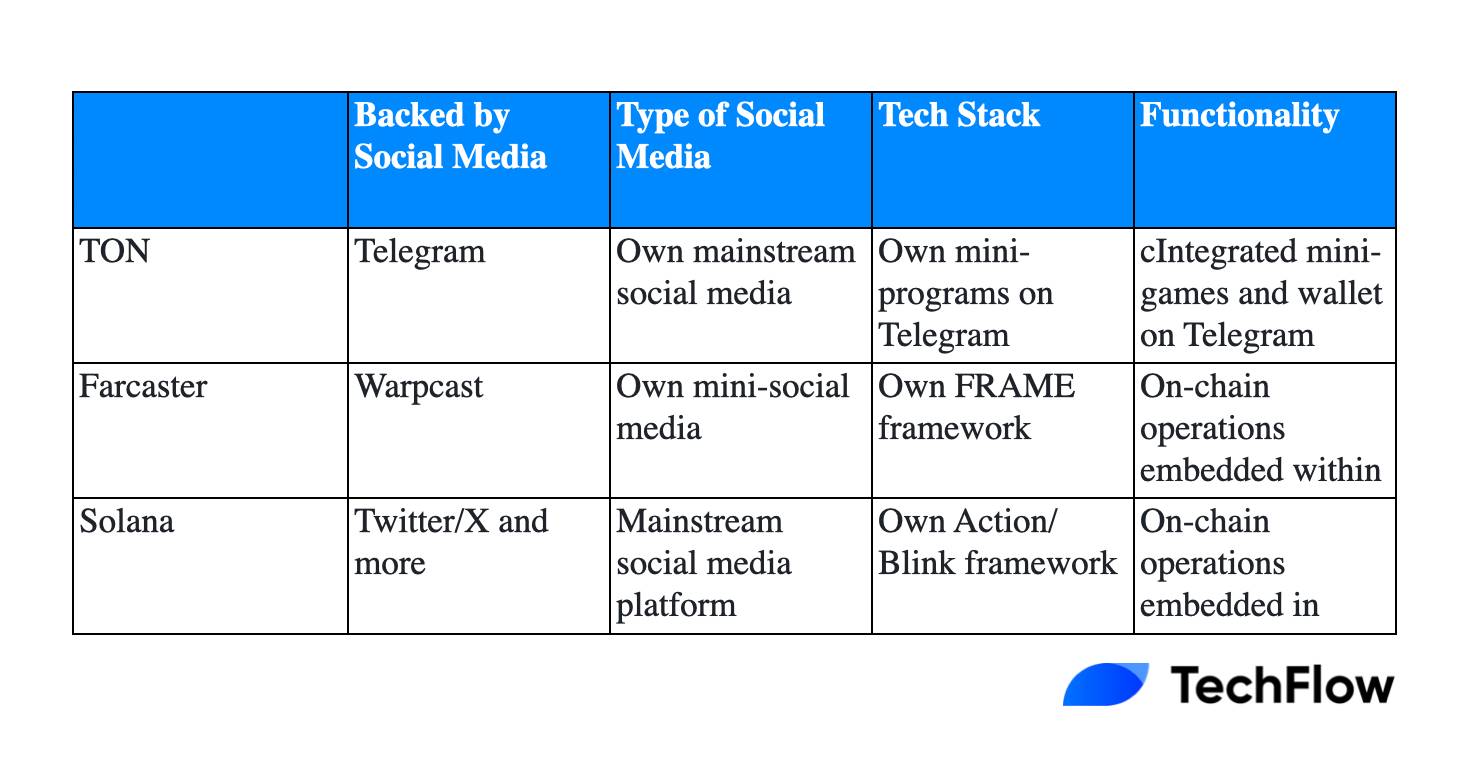
It's hard to say who will come out on top, as each platform has its own strengths and audience. But one thing is certain:
Mainstream adoption in the crypto world inevitably involves social integration.
Given the current rough user experience in crypto, expanding into new areas to attract more users is a necessary step.
So, smart as you are, which spaceship will you board?
Recommendation

The Fall from Grace of Friend.Tech: How They Botched a Winning Hand
Jul 07, 2024 14:09

Exploring the Real Japanese Crypto Market: Coexistence of Isolation and Contradiction, Where are the Opportunities?
Jun 06, 2024 18:47

Decoding the Chinese Market: Market Size, Policy Analysis, VC Introduction, Influencer Mapping, and Marketing Strategy
Jun 06, 2024 18:55